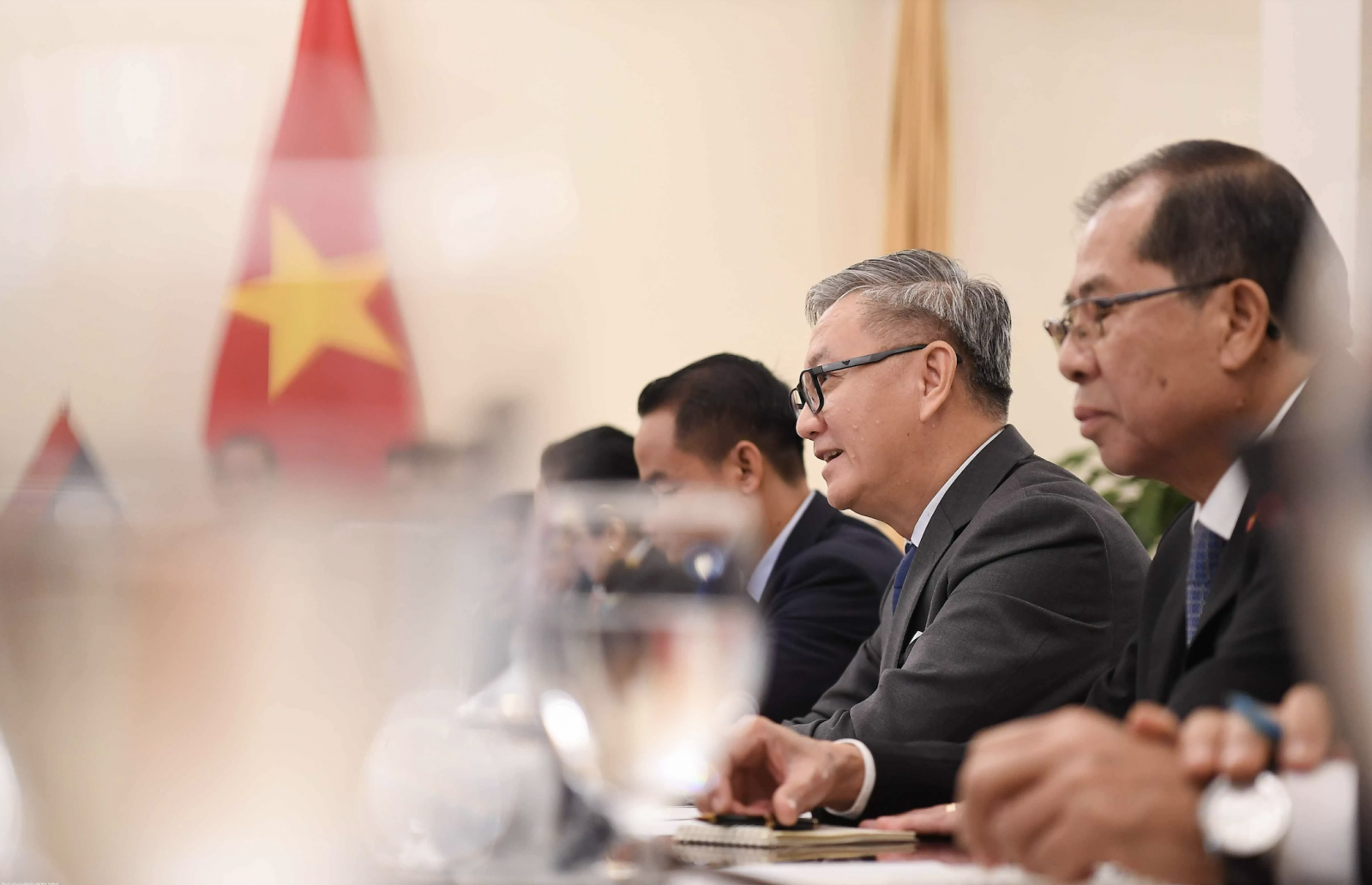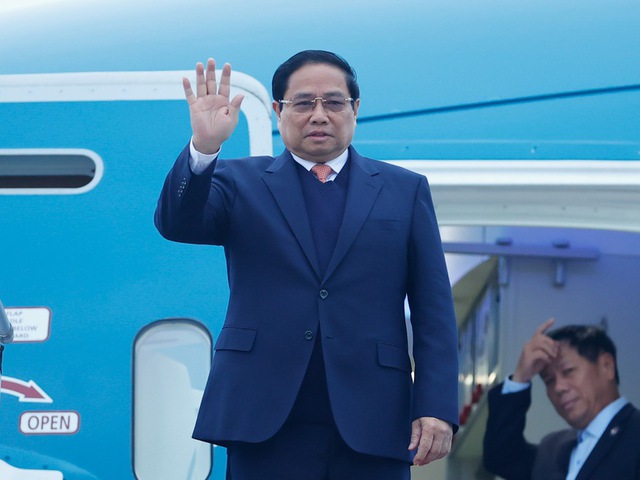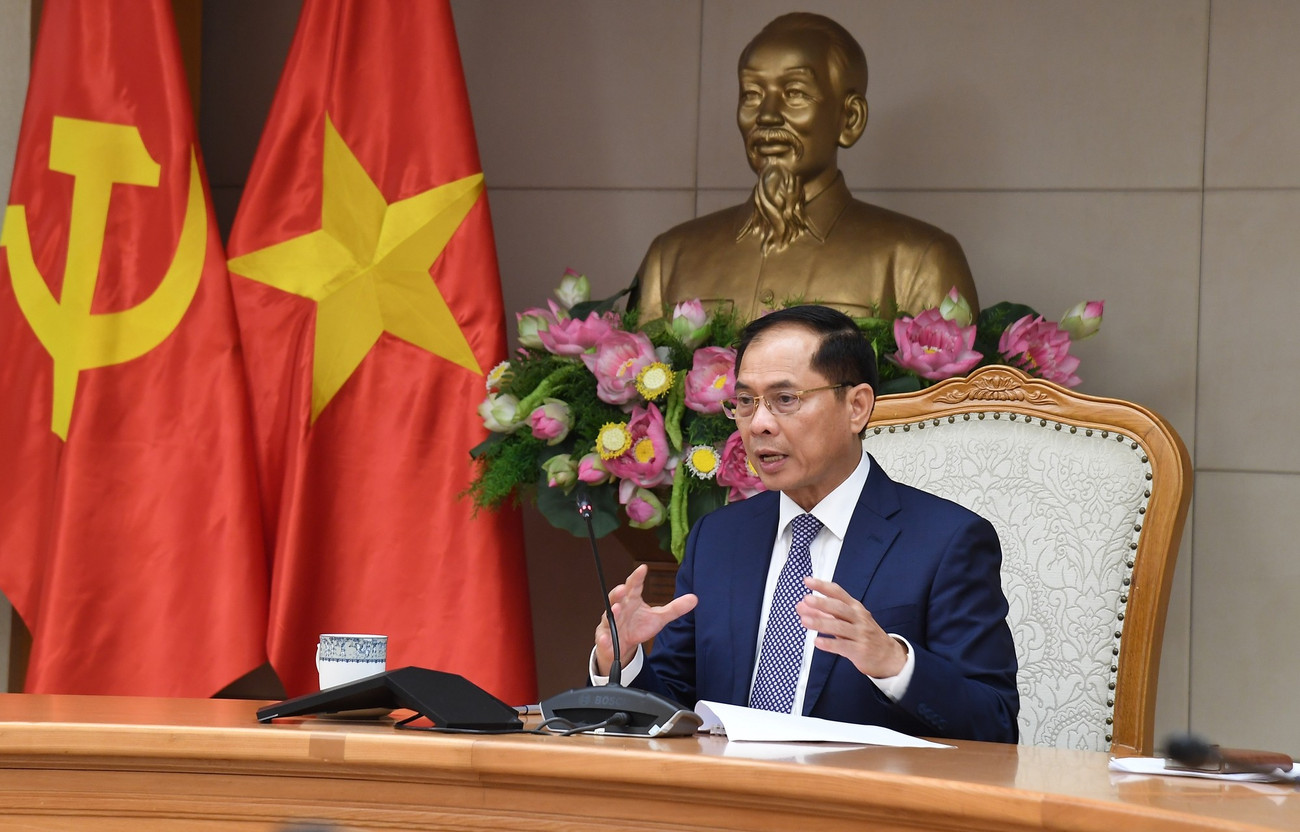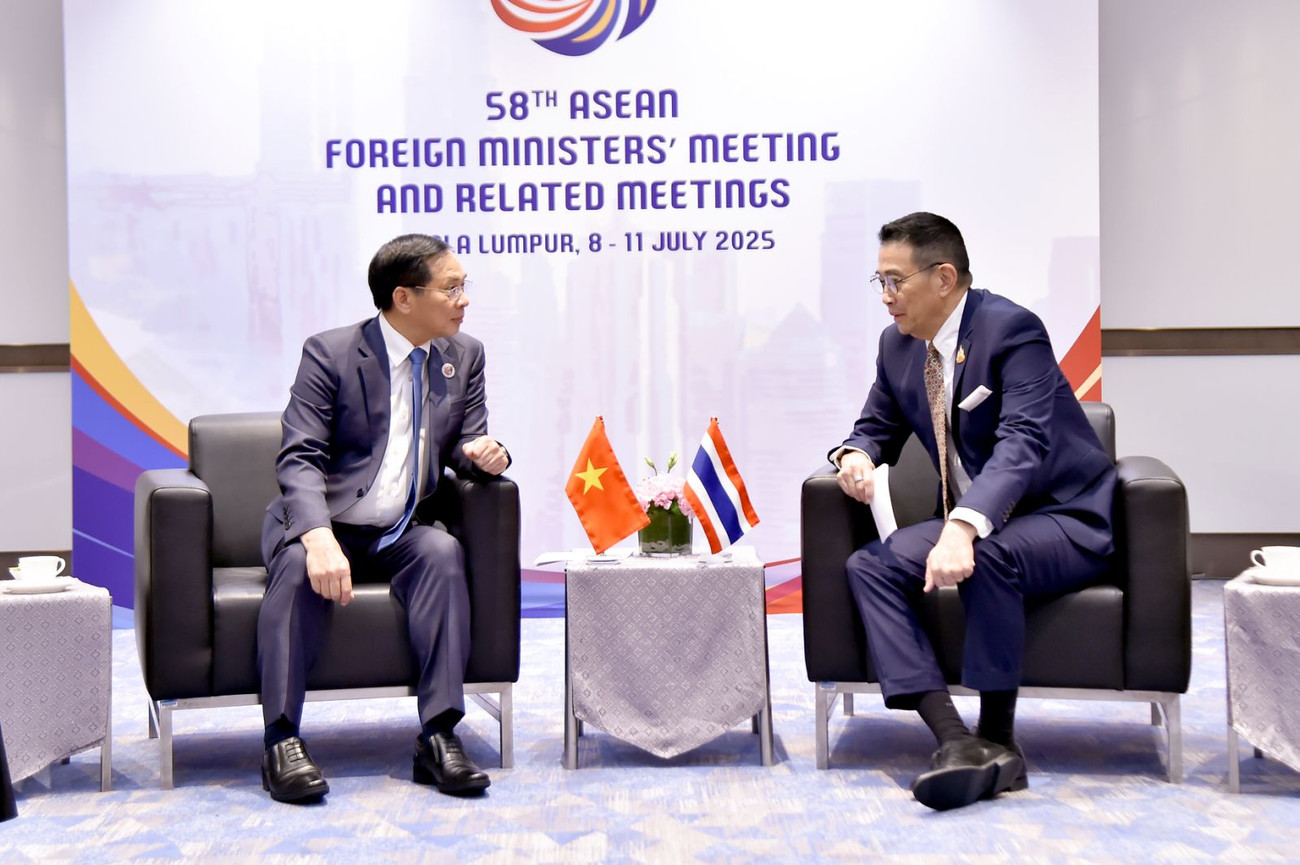MOIT VIETNAM | Strategic Cooperation Surges as Bilateral Trade Hits $1.3 Billion in Early 2025
/ News / Activities
Strategic Cooperation Surges as Bilateral Trade Hits $1.3 Billion in Early 2025
The comprehensive strategic partnership between Vietnam and Laos has entered a dynamic new phase, underscored by soaring trade figures, deepening institutional ties, and a shared determination to expand multifaceted cooperation across all sectors. More than a diplomatic relationship, the bond between the two neighboring countries stands as a rare example of enduring loyalty, revolutionary camaraderie, and mutually beneficial development in today’s complex geopolitical landscape.
One of the most striking indicators of this evolving partnership is the dramatic rise in bilateral trade. In just the first four months of 2025, two-way trade turnover reached USD 1.3 billion—more than double (109.3% increase) the value recorded during the same period in 2024. This follows a record-setting performance in 2024, when trade between the two nations reached USD 2.2 billion, up 33.9% from the previous year. These figures not only reflect the effectiveness of joint economic initiatives but also signal growing confidence from both governments and business communities in each other's markets.
.jpg)
A Strategic Diplomatic Engagement
This surge in trade and cooperation was a key theme in the meeting held on June 2 between Vietnamese Deputy Prime Minister and Minister of Foreign Affairs Bùi Thanh Sơn and Mr. Bounleua Phandanouvong, Acting Head of the Lao People’s Revolutionary Party’s Central Committee for External Relations. The meeting carried both symbolic and practical significance: it marked Mr. Bounleua’s first official visit abroad in his new role and took place at a momentous time when both countries are preparing for their respective National Party Congresses—events that will define their political and economic roadmaps for years to come.
Deputy Prime Minister Bùi Thanh Sơn warmly welcomed the Lao delegation, underscoring that the visit coincided with an important institutional milestone for Vietnam—namely, the merger of the Central Commission for External Relations with the Ministry of Foreign Affairs. This move aims to enhance the coherence and strategic coordination of Vietnam’s external affairs, further facilitating high-level cooperation with trusted partners like Laos.
He expressed strong confidence that this visit would officially open a new era of partnership between the two bodies, laying a stronger foundation for future cooperation. Mr. Sơn also congratulated the Lao Party and people on their socio-economic achievements in recent years, reaffirming Vietnam’s steadfast support for Laos’s development goals.
Affirming Political Loyalty and Revolutionary Brotherhood
For his part, Mr. Bounleua Phandanouvong emphasized that choosing Vietnam as the destination for his first official visit in his new role was a deliberate affirmation of Laos’s foreign policy priorities. He declared that Laos continues to regard the special relationship with Vietnam as a cornerstone of its external relations and an indispensable part of its national strategy.
In a heartfelt exchange, both sides reaffirmed the unique historical foundation of their relationship—one forged through decades of shared struggle for independence, peace, and nation-building. Mr. Bounleua noted that every victory won by the Lao people, both during wartime and in their ongoing development journey, has been made possible in part due to the invaluable support of the Vietnamese Party, State, and people.
The two leaders reviewed a broad spectrum of cooperation efforts that have borne fruit in recent years, from politics and defense to culture and connectivity. They agreed that the political relationship remains strong and vibrant, bolstered by frequent high-level exchanges, Party-to-Party consultations, and intergovernmental coordination mechanisms.
Anchoring Economic Collaboration with Strategic Projects
Beyond symbolic gestures, the Vietnam–Laos relationship continues to produce tangible results, especially in the economic domain. A standout example of this is the recently inaugurated Terminal 3 at Vũng Áng Port—a landmark infrastructure project jointly developed by both nations. This port terminal not only embodies the spirit of cross-border solidarity but also provides Laos, a landlocked country, with a vital maritime outlet, potentially transforming the region’s trade dynamics.
The port’s completion is expected to drastically enhance logistics capacity, reduce transportation costs, and increase the volume and efficiency of imports and exports for both sides. For Laos, it opens a direct gateway to the global economy. For Vietnam, it deepens its strategic role as a regional hub and reaffirmed its role as Laos’s most trusted economic partner.
.jpg)
The two sides also reviewed progress in other areas of economic engagement, including cross-border trade facilitation, customs cooperation, infrastructure connectivity, investment promotion, and the creation of special economic zones along shared borders. Joint working groups and inter-ministerial task forces have been actively coordinating to remove barriers and accelerate priority projects.
Expanding Cooperation in Education, Culture, and Human Development
Education and human capital development continue to serve as long-term pillars of bilateral collaboration. Vietnam has provided thousands of scholarships to Lao students, supported vocational training, and sent experts to help Laos improve its educational infrastructure. These efforts aim not only to build capacity but also to cultivate a new generation of Lao leaders, professionals, and intellectuals who understand and value the special friendship between the two countries.
Cultural exchanges and people-to-people engagement have also flourished. Through festivals, academic forums, artistic collaborations, and youth exchanges, both sides have sought to promote deeper mutual understanding. These activities help to preserve shared cultural traditions while also fostering a sense of modern solidarity adapted to the needs of young people in both societies.
Cooperation in tourism, science and technology, healthcare, and public administration reform has also been expanding. Joint projects in these sectors are being developed not only by central governments but also by local administrations and private enterprises.
Institutionalizing Strategic Cooperation for the Future
Recognizing the importance of institutional continuity and forward-looking planning, both sides agreed to draft and adopt a new cooperation agreement between the Vietnamese Ministry of Foreign Affairs and the Lao Central Committee for External Relations for the 2026–2030 period. This agreement will provide a formal framework for continued collaboration, ensure the implementation of high-level political commitments, and guide future engagements.
The two parties also agreed to closely coordinate the preparation of upcoming high-level visits and major events marking significant anniversaries in the Vietnam–Laos relationship. They reaffirmed the need to jointly organize cultural, educational, and media initiatives to raise awareness of the special ties between the two countries, especially among the younger generation.
Additionally, both sides pledged to strengthen the exchange of information and policy experiences, particularly regarding party-building efforts, governance reform, and the organization of each country’s National Party Congress.
Coordinating on Regional and Global Strategy
Looking beyond bilateral issues, Vietnam and Laos also discussed regional and international developments, sharing common perspectives on key strategic challenges. They expressed strong support for upholding ASEAN centrality and unity, committing to coordinate their positions on issues such as maritime security, economic integration, climate change, and digital transformation.
Both sides recognized the need to enhance cooperation within sub-regional mechanisms such as the Mekong River Commission and other development corridors. They agreed that closer coordination on these fronts would allow both countries to advocate more effectively for shared interests, especially in relation to water resource management, environmental protection, and sustainable development.
In the broader international arena, the two nations emphasized the importance of upholding the principles of sovereignty, independence, and non-interference in internal affairs. They agreed to support each other’s candidacies and positions at global forums, thereby amplifying the voice of small and medium-sized developing countries.

A Timeless Partnership Anchored in Mutual Respect
As their talks concluded, both Deputy Prime Minister Bùi Thanh Sơn and Acting Chairman Bounleua Phandanouvong reiterated their firm belief that the Vietnam–Laos relationship would continue to thrive. The unprecedented growth in trade, combined with deepening political trust and expanding cooperation across all levels, illustrates a relationship that is not only rooted in history but also geared toward the future.
More than just a diplomatic success story, the Vietnam–Laos partnership is a living example of how two countries—united by shared ideals, sacrifices, and goals—can grow together in peace, prosperity, and dignity. As both countries look ahead to new challenges and opportunities, they do so side by side, hand in hand, with a commitment to ensuring that their bond remains, in the words both proudly proclaim, “forever green and eternally sustainable.”
-
/ News / Activities
Prime Minister Pham Minh Chinh’s Strategic Visit to Laos Marks New Chapter in Bilateral Relations
Prime Minister Pham Minh Chinh’s official visit to the Lao People’s Democratic Republic and his co-chairmanship of the 47th meeting of the Vietnam–...
-
/ News
Deepening Cooperation, Strengthening Regional Unity
On the afternoon of July 28, 2025, at the Government Headquarters in Hanoi, Deputy Prime Minister and Minister of Foreign Affairs of Vietnam, Mr. B...
-
/ News / Activities
Vietnam and Laos Accelerate Toward Deeper Regional Integration and Unprecedented Trade Growth
In an era where regional connectivity and economic resilience are critical pillars for national development, Vietnam and Laos are emerging as a mod...





